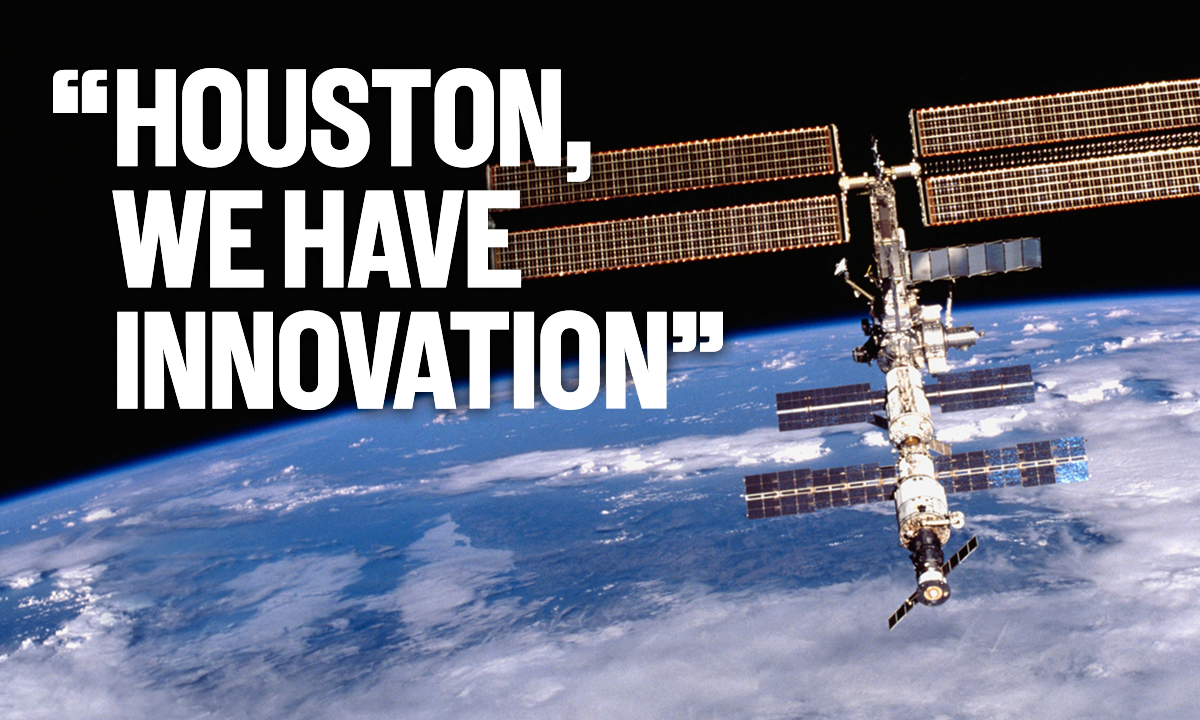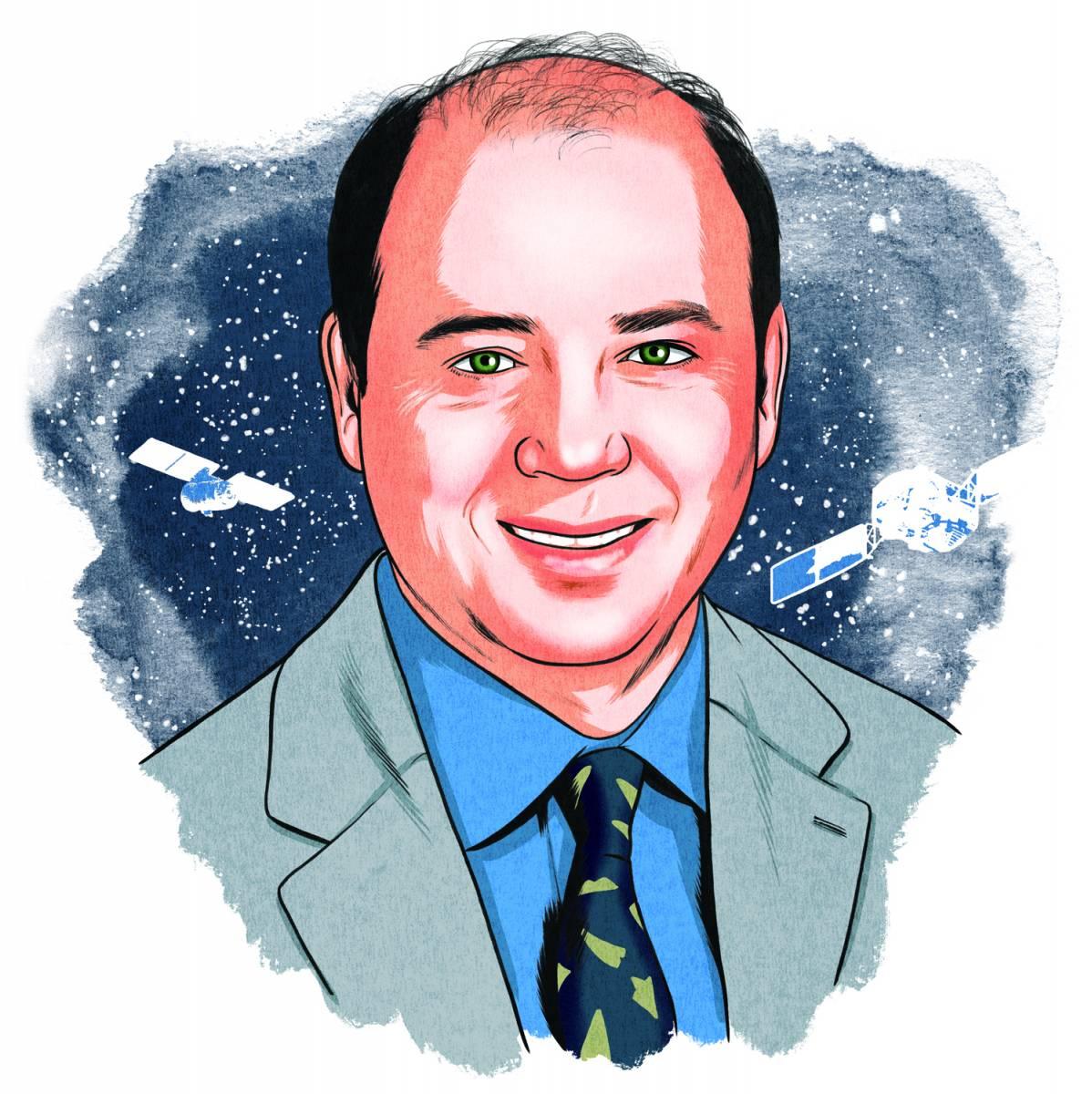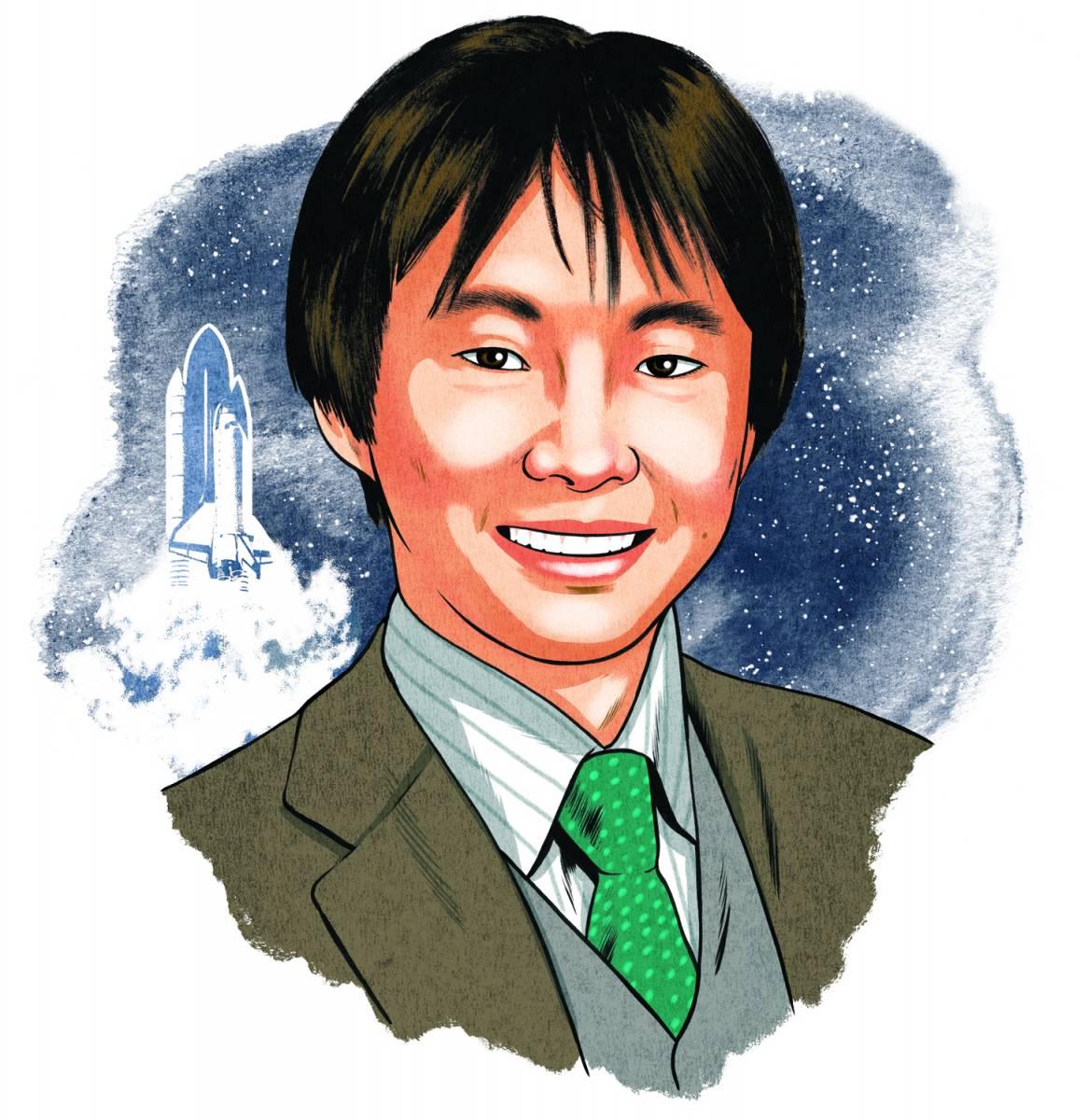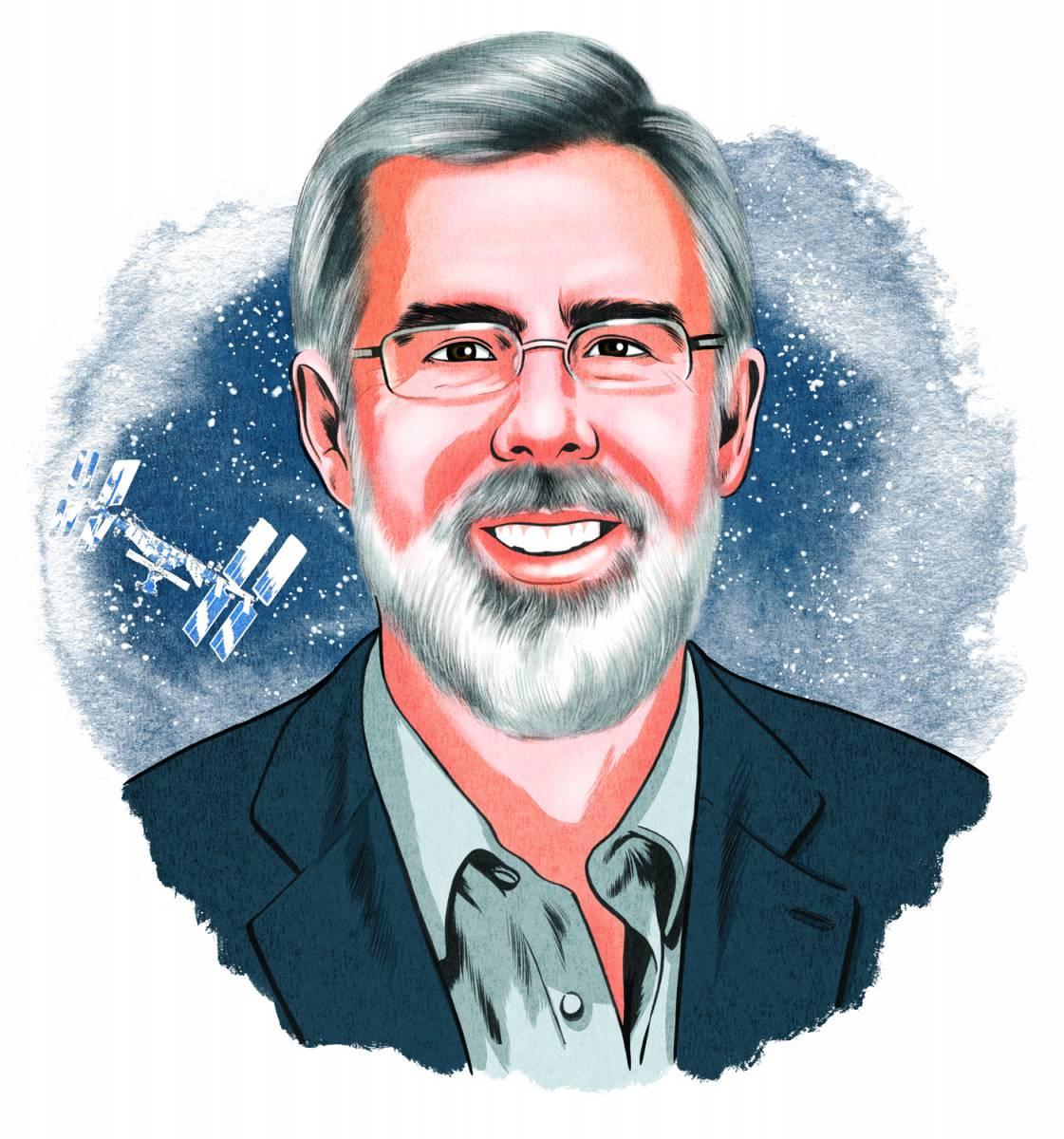How Georgia Tech engineers are shaping the second age of space exploration

One October day in 1957, Sputnik I entered Earth’s orbit, and the Space Age officially began. Now, as the 2020s roar in, the world is on the cusp of a second great age of space exploration. And it’s one that Georgia Tech engineers are working to shape.
The first space age was dominated by a few major players, namely, nations with the resources to manage this immense task. The focus was on arrival — launching a satellite, setting foot on the moon, venturing beyond the solar system — and where crews were involved, a safe trip home.
In comparison, the second space age is an open-ended, open-access, joyfully riotous free-for-all. And the emphasis is on establishing a more lasting presence.
Glenn Lightsey, a David Lewis Professor of Space Systems Technology in the Daniel Guggenheim School of Aerospace Engineering, is overflowing with excitement at the possibilities: the scientific exploration, the extraterrestrial outposts, the goods and services delivered to Earth from orbiting stations above. But “the most exciting thing,” he says, “is how much more accessible space is today and will become in the future.”
More missions are planned than ever before. NASA will soon launch another Mars rover and send a spacecraft to Saturn’s moon, Titan. Private-sector companies like SpaceX, Boeing and Virgin Galactic are planning both crewed and autonomous explorations and executing daring missions, like Elon Musk’s vision to ferry people to Mars in the coming decades. And many more space agencies around the globe — India, China, Europe and others — are launching their own expeditions.
What’s driving this revolution? For one, it’s a shocking drop in launch costs, which has enabled an outpouring of both collaboration and competition. Over the past decade, it’s become 20 times cheaper to get a spacecraft out of the mighty pull of Earth’s gravity and into the weightlessness of space. Thanks in part to work by Lightsey and his colleagues, it’s becoming more affordable still.
This shift in affordability and accessibility, Lightsey says, will lead to discoveries we haven’t anticipated, as autonomous spacecraft venture further and advance research aims on distant planets, asteroids and moons.
An expanded human presence in space will change life on Earth, too. A larger network of deep space communications satellites will expand global access to high-speed data. Orbiting manufacturing centers could produce advanced materials that are difficult to manufacture within Earth’s gravity. Space-based solar power stations could soak up the sun’s strongest rays to produce cheap renewable energy for use here on Earth.

The mighty miniature spacecraft
To help achieve some of these aims, Lightsey’s team in the Space Systems Design Lab is building miniature autonomous spacecraft that can match the performance of a much larger space vehicle.
“The cost of doing a mission in space is driven by the size of the spacecraft,” Lightsey says. “The bigger the spacecraft, the more expensive it is to make.” As with computers and cellphones, the pieces that power spacecraft are shrinking by the year, making miniaturization possible.
Lightsey’s team is using advanced technologies and new materials to build the smallest propulsion systems ever. Right now, they’re building one for NASA: a propulsion system small enough to fit in the palm of your hand, engineered to power a satellite the size of a briefcase.
NASA plans to launch this mini satellite into orbit around the moon, where it will search for ice. If ice is discovered — with its promise of water — it could radically expand human exploration by ensuring access to a key ingredient for survival and infrastructure. No need to transport water to space at the cost of thousands of dollars per kilogram.
In the meantime, Lightsey and his team need to work out the details that will allow their small propulsion system to attain enough power to maneuver that briefcase-sized object into orbit. Designing something so tiny and powerful is extraordinarily hard.
“It’s a small gas tank, so the propellant must be very efficient,” Lightsey explains. “Things that are very hot are situated next to things that are very cold. Everything that is difficult to build in a big thruster becomes harder when the environment is smaller. It’s all much more integrated, and you can’t just design 10 systems separately.”
Miniaturizing the system that launches a satellite is just one part of Lightsey’s research. His lab is also examining ways to deploy swarms of small satellites. The goal is to create a constellation of semiautonomous satellites that together can work more flexibly and effectively than a single larger satellite. To meet this challenge, his team will have to solve some of the same problems that plague designers of self-driving cars here on Earth.
“In many cases, you can do things more effectively with multiple vehicles working together than a single vehicle trying to do it by itself,” Lightsey says. The approach, called satellite formation flying, offers many advantages. Small, single-purpose devices are cheaper to build, easier to replace and can cover multiple angles and locations at the same time. Potential applications for these satellite swarms include next-gen communications networks, high-resolution telescope arrays and improved weather forecasting.
Modeling missions in 3D – and Zero-G
Yet, as more vehicles head to space, the logistics of managing space traffic are becoming a lot more complicated. That’s the problem Lightsey’s aerospace engineering colleague, Koki Ho, is working on.
The assistant professor heads up Georgia Tech’s new Space Systems Optimization Group. Backed by research grants from NASA and the U.S. Department of Defense, Ho is applying mathematical modeling and machine learning to create problem-solving frameworks that conquer logistical challenges in space.
In the past, planning a spacecraft’s journey has focused on Point A (Earth) to Point B, and sometimes the return. But with more traffic up there, such planning needs to change.
“With more vehicles and destinations, the problem is more complicated than optimizing trajectory,” Ho says. Planning space missions as networks rather than single voyages, he says, requires a more mathematically rigorous approach to mission design. Perhaps even a new paradigm.
Take the example of “on-orbit servicing.” Usually, when something goes wrong with an orbiting spacecraft, a service mission is sent to fix it. When the job is done, that service spacecraft returns to Earth.
But as more spacecraft like Lightsey’s autonomous satellites enter permanent orbit, such an approach is no longer so efficient. Instead, you need helper spacecraft to remain in orbit, too, where they can reach their targets more quickly and cheaply. But where should these helpers be stationed, and what servicing capacity should they have?
Ho compares the problem to the fire stations here on Earth. No one knows exactly when or where a fire will break out. That’s why fire stations are strategically spaced, taking into account where fires might happen. Each needs to have the optimal number of vehicles and firefighters to respond quickly when the time comes.
Imagine a space repair infrastructure that looks a little like that – strategically-spaced hubs that house optimally-sized repair vehicles along with an optimal amount of equipment, so help is never too far away. Ho is developing such an approach.

“Many of our research questions are driven by real problems,” says Ho. “The common theme behind all these challenges is complexity. Space mission design has become much more complex. In response, we may need to provide new tools and a new way to think about space mission design itself.”
The next big leap? Crewed missions to the moon and Mars, allowing humans to explore the terrain and build bases. But first, scientists need to answer some big questions about the impacts of long-duration space travel on the human body – how humans react to life in microgravity for a month or longer.
The leap toward life on Mars
Right now, our best approximation is life on the International Space Station, which houses an international crew of six people, 250 miles above Earth. Each astronaut usually stays on the station for about six months. This living laboratory shows the many ways that living in space can take its toll. Muscles deteriorate, bones become less dense and exposure to cancer-causing radiation increases.
Another toll is an eye condition that causes blurred and deteriorating vision, and can ultimately end in blindness. It’s called SANS, for Spaceflight Associated Neuro-Ocular Syndrome, and Professor Ross Ethier is working with NASA to understand its causes.
About 40 percent of astronauts experience these symptoms after spending a month or longer in microgravity. But some never do. “That’s one of the mysteries of SANS,” says Ethier, a professor in the Coulter Department of Biomedical Engineering and Georgia Research Alliance Lawrence L. Gellerstedt, Jr. Eminent Scholar in Bioengineering. “It’s a very mysterious condition. We don’t really understand why this occurs.”
One major challenge is getting a good view of the condition. For a variety of reasons, conducting an MRI in space is not an option. So, Ethier and his team recruited volunteers to undergo MRIs while lying in an inverted position, with heads tilted downwards. This changes the pressure around the brain, mimicking some of microgravity’s effects and allowing a closer look at the eyes under such conditions.
NASA also gives astronauts MRIs before and after spaceflight, collecting important data on its physical effects. Ethier’s team been given access to this data as well, allowing them to illuminate properties of the optic nerve and the sheath that protects it. Ethier aims to determine what makes some astronauts more vulnerable to SANS than others and discover countermeasures to protect all space travelers.
“This has to be solved before we can venture out farther,” Ethier says. “I think they’re most worried about a Mars mission. It’s not like you can just whip back to Earth and get a new pair of glasses.”
The 2020s are here – with a bang – and one thing is certain: the human desire for exploration is as pressing as ever. As craft and crews from around the globe venture farther into space and stake their footholds, the opportunities will only multiply.
And so will the challenges. For engineers, the decade ahead is filled with plenty of successes to celebrate as well as new intriguing problems to solve.
